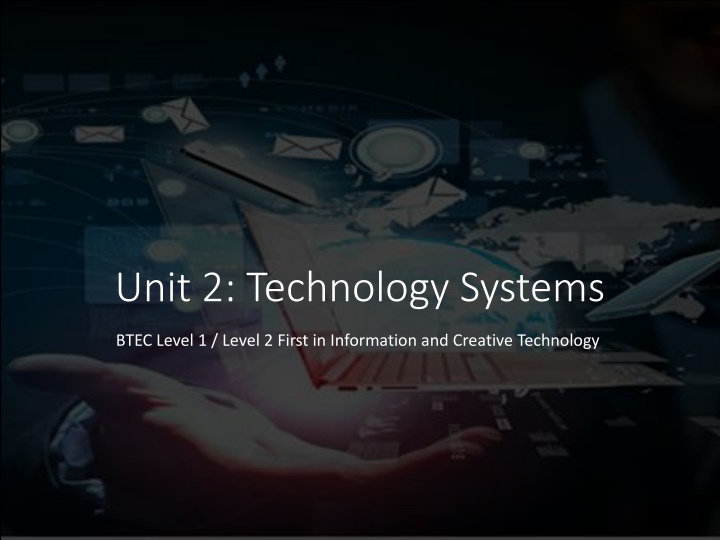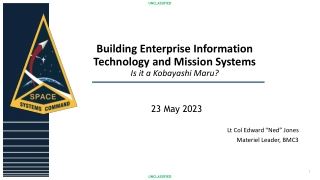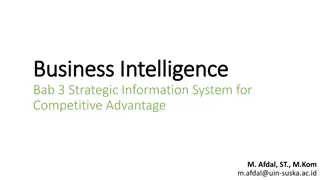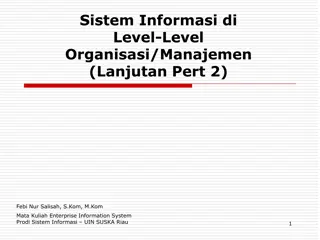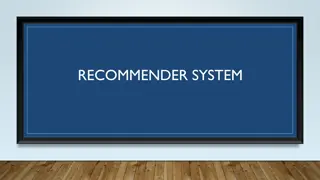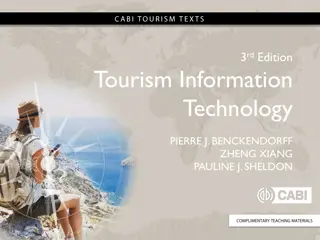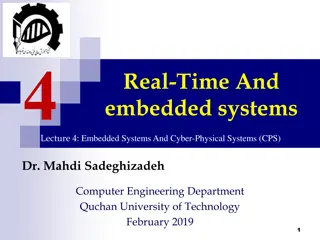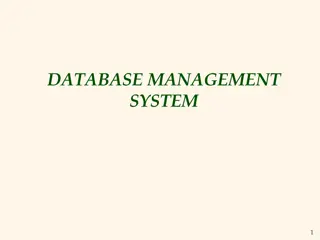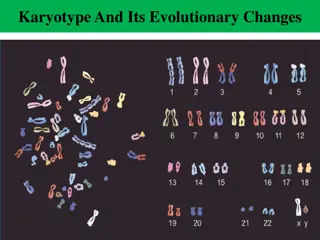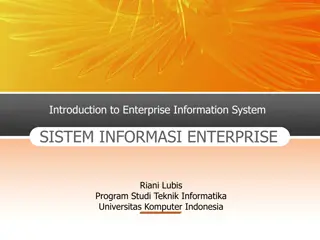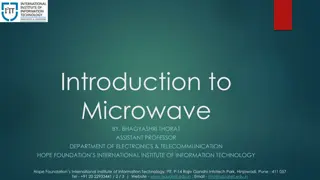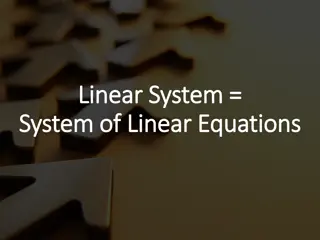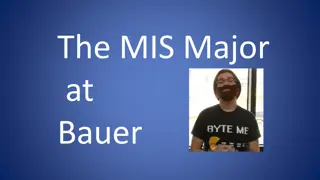Technology Systems in Information Technology
Technology systems encompass software, operating systems, user interfaces, and utility applications that are essential for managing and utilizing computer systems effectively. Software plays a key role in directing the operation of technology systems, with off-the-shelf and custom-made options available. Operating systems link hardware with users and programs, managing files, hardware resources, and security aspects. User interfaces provide intuitive ways for users to interact with computer systems through graphical or command line interfaces. Utility applications enhance system performance with tools like file management systems for organizing and retrieving files efficiently.
Download Presentation

Please find below an Image/Link to download the presentation.
The content on the website is provided AS IS for your information and personal use only. It may not be sold, licensed, or shared on other websites without obtaining consent from the author.If you encounter any issues during the download, it is possible that the publisher has removed the file from their server.
You are allowed to download the files provided on this website for personal or commercial use, subject to the condition that they are used lawfully. All files are the property of their respective owners.
The content on the website is provided AS IS for your information and personal use only. It may not be sold, licensed, or shared on other websites without obtaining consent from the author.
E N D
Presentation Transcript
Unit 2: Technology Systems BTEC Level 1 / Level 2 First in Information and Creative Technology
Software Software Software is any program that can run on a computer containing a microprocessor. When the program runs, it directs the operation of the technology system by controlling the processing and peripheral devices. There are two main categories of software: Off-the shelf instantly available, well-tested and bug- free! Usually cheaper than custom made software with good support available from books and the internet. E.g. MS Office suite, Adobe Photoshop Custom made - specially written for a client to meet a specific need, also called bespoke. Can take weeks or months to write but should deliver exactly what the customer specified. Some organisations commission custom-made software to solve a specific problem, such as carrying out financial transactions or a robot control program for a production line.
Operating Systems The role of the operating system is to link the hardware with the user and any program running on the computer. The OS has many functions: Managing files by copying, renaming and deleting them, and using folders. Managing hardware by loading programs, allocating them resources and using drivers to link to specialist hardware such as a video card. Allocating resources by sending keyboard / mouse inputs to programs, as well as accessing other resources such as printing and the hard disk. Handling security issues such as restore points (to return system files and settings back to an earlier state), backups and access to files when multiple users share a PC.
User Interface User Interface There are two common ways users can interface with computer operating systems and other applications, either using a GUI or a command line interface (CLI). Accessibility and ease of use are much better with a GUI than with a CLI because: The mouse is easy to use for controlling the computer. A GUI can be configured to magnify the screen, speak documents to you or recognise your voice commands. A GUI has drop down menus which list all the available choice the user just has to click on the one they want. There is often a search box where you can type in the name of a document or a key word within a document that you need to find. The operating system will find the file for you which saves you manually having to search through folders and files. A GUI uses icons to click on, so you can easily start an action with a mouse.
Utility Applications Operating systems may include utility applications, which are small programs designed to improve system performance. Examples include: File Management Systems the most basic of all types of software. They are used to organise and store files on a computer, as well as index those files for easier retrieval. Most computers come with a basic file management system that is built into the operating system. A File Management System is great for anyone who needs to find old files or organize their content in an efficient manner.
Utility Applications Examples include: Software firewalls these stop unwanted traffic from the internet entering the computer. Anti-virus software this tries to prevent malware from entering a computer. It also scans the computer and connected devices to check that no malware has gained access.
Productivity Applications These are software programs written to improve the efficiency and effectiveness of everyday tasks: Home office programs include word processor, spreadsheet, database and presentation software, which can be purchased individually or as a suite. Graphics software is used to make and edit pictures. CAD software is used to design components and buildings. Multimedia software is used to combine sound and images into cartoons or videos. Web-authoring software is used to create, edit and upload web pages. Bespoke software can be create for businesses which is tailored just for their needs. This can be expensive and will only allow them to use it for what it was created.
Mobile devices Mobile devices have operating systems that are optimised for user interface, accessibility and ease of use. The user interface is usually a touch screen with voice recognition, which the operating system needs to control and make easy to use. Accessibility on mobile devices can be further enhanced with onscreen readers and magnifiers to enlarge parts of the screen and make it easier to read. Modern mobile phone operating systems -
Software installation and upgrades There are some factors you need to consider before installing or upgrading an operating system or productivity application to ensure it will work. You should make sure that any application you wish to install is compatible with your operating system.
One benefit, one drawback of buying off the shelf software
